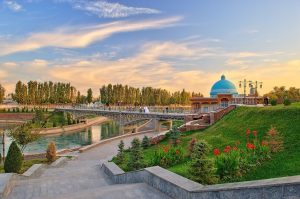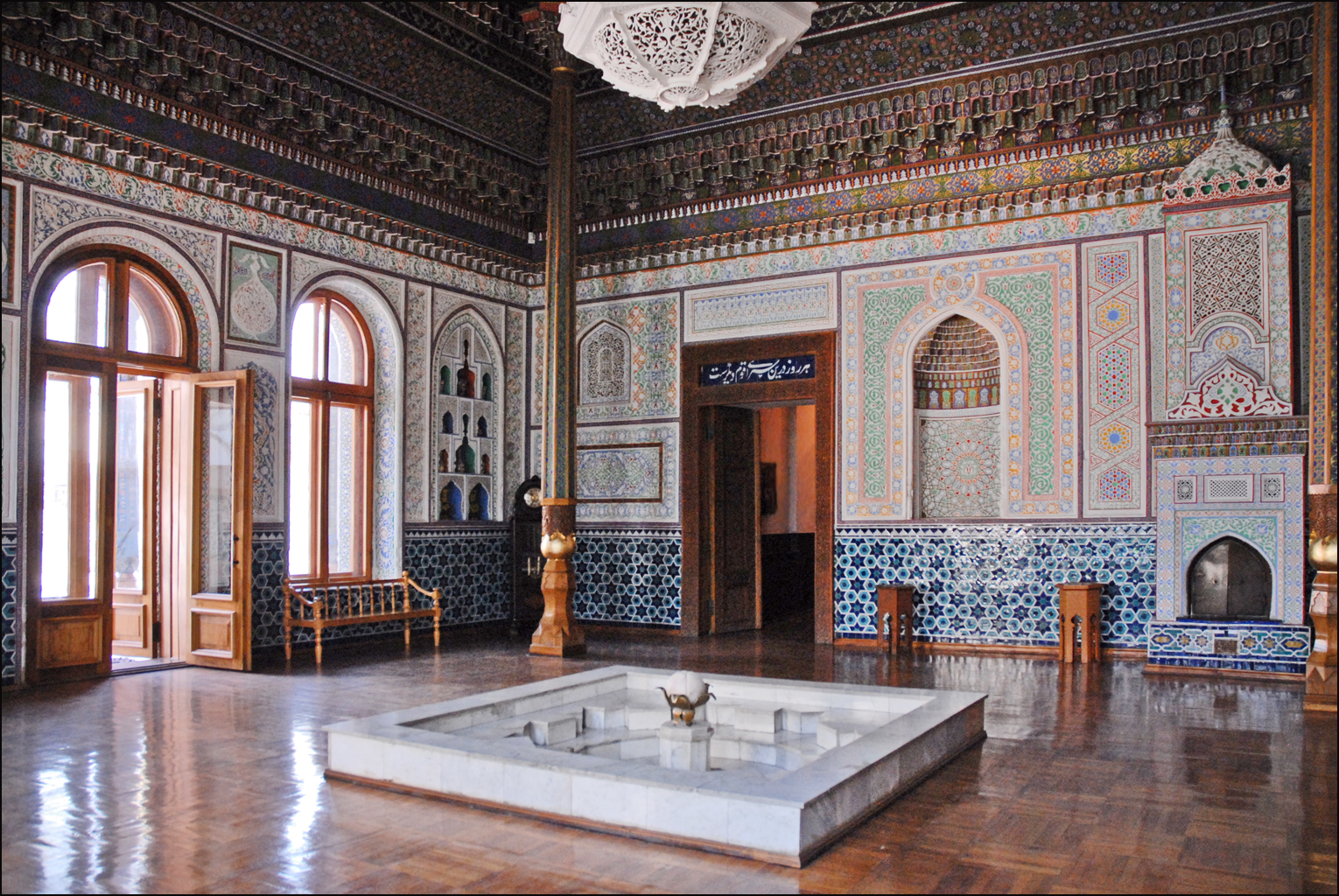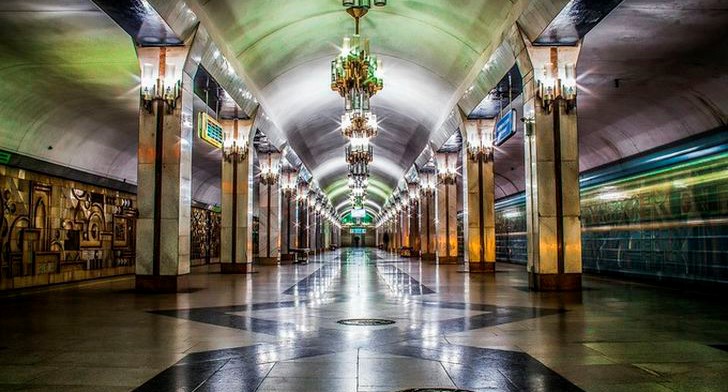Tashkent is the capital of Uzbekistan, and is also Central Asia’s largest city and its main transportation hub. Tashkent is one of the most important business centers in the region as well. Present-day Tashkent is one of the most beautiful cities in Asia. Its architecture is unique, and the hospitality and friendliness of the people is incomparable.
Tashkent was first mentioned in “Avesta” and in ancient Chinese manuscripts. The city arose in the Chirchik river valley, on the border of the oasis and steppe as the place, where farmers and cattle-breeders, settled population and nomads used to meet for joint trading. In the ancient chronicles the city was known under such names as Yuni, Chach, Shash. Judging from the accounts made by al-Biruni and Makhmud Kashgari, the name “Tashkent” first appeared in the Turkic sources of the 9th-12th centuries. The city has always served as a link between the countries in the East and the West, in the North and the South.

Kukaldosh Madrasah. Kukaldosh Madrasah is one of the few remaining monumental architectural monuments of Tashkent. The madrasah was constructed in the 16th century by the powerful vizier Kukaldosh, a foster-brother of Barak-Khan, the ruler of Tashkent Province. A high hill was chosen for the construction of the madrasah, and it served a kind of a pedestal for the building. Similar to most of the large buildings of those times, the madrasah was made from baked bricks and only partially decorated with majolica and tiled ceramic patterns.
Abdulkasim Madrasah. In Tashkent`s public green space situated between two busy wide roads lined with high blocks of flats, just behind “Istiqlol” Palace, there is a remarkable old building. This is Abdulkasim Madrasah (built in 1850), whose carved doors are always open for visitors interested in antiques and Uzbek traditional arts and crafts. Here are the workshops of the craftsmen working under the aegis of The International Fund Oltin Meros (“Golden Heritage”).
Museum of Applied Arts. On a quiet Tashkent street, hidden from the city’s noise in one of the neighborhoods, a passerby will notice a building with an Uzbek traditional ayvan terrace decorated with beautifully carved columns. This is the Museum of Applied Arts. It occupies the building whose construction was commissioned by Alexander Polovtsev, a wealthy tsarist diplomat of Turkestan Governor-General’s Office. A connoisseur of Oriental architecture and decorative patterns, he invited the local well-known ganchkor and nakkosh artists to decorate his mansion.

The other halls of the museum exhibit the works of the finest craftsmen, representing all the local schools and styles of the 19th-20th centuries. Here you can see the “blue ceramics” of Rishtan and Gurumsaray masters, the pottery of Shakhrisabz, Khiva, Gijduvan and Tashkent ceramists. On display are samples of the carpets and embroidery, including the famous Bukhara gold embroidery.
Shaykhontohur Complex. One hundred years ago, today’s Navoi Street, one of the widest and most beautiful avenues of Uzbek capital, was called Shaykhontohur Street. It had been named after the deeply respected Sufi sheikh Khavendi at-Takhur (Shaykhontohur). His mausoleum is located in this part of the city. The memorial of at-Takhur is believed to be the oldest structure in Tashkent. It was built over the grave of the sheikh by Amir Temur’s order at the end of the 14th century.
The Tashkent Metro. Durability, usefulness, and beauty is perfectly embodied in the complex and monumental structure, the Tashkent Metro. This transportation network is a peculiar attraction of Uzbekistan’s capital.
The Metro was designed and constructed after Tashkent had suffered a destructive earthquake in 1966. Because of the unfavorable seismic conditions, the designers and constructors had to cope with very difficult tasks. The complicated geological conditions, liquid-filled shingle and subsiding loess soil posed additional difficulties. That is why the Tashkent Metro is not deep. The passengers use the common stairs to get down to almost all of the stations. Only a few of them are equipped with escalators. It must be noted that since the launch of the first underground line in 1977, several earthquakes have struck Tashkent. But none of them has affected the operational quality of the Metro.

Chorsu Bazaar. Chorsu Bazaar is one of the largest in Central Asia. Under seven huge domes covered with colored glazed tiles are the pavilions where farmers sell their produce. Fruit and vegetable sections dazzle visitors with the abundance and variety of the merchandise. On the stalls are piles of ruddy apples and honey-tasting pears, peaches, prunes, large quinces, and bunches of black, pink and amber-colored sweet grapes. The yellow figs are carefully covered with green leaves. In baskets are pomegranates with ruby seeds and orange-red persimmons. And there are mountains of huge watermelons and pineapple-scented melons. In one of the pavilions, you get enveloped in a cloud of spicy aromas. Saffron and cinnamon, red and black pepper, cloves, nutmegs, cardamom, caraway seeds, and cumin seeds, without which no genuine Uzbek palov can be made.
Chorsu Bazaar, full of fabulous wealth and exotic goods, opens its gates with a hearty ‘Khush kelibsiz!’– ‘Welcome!’


